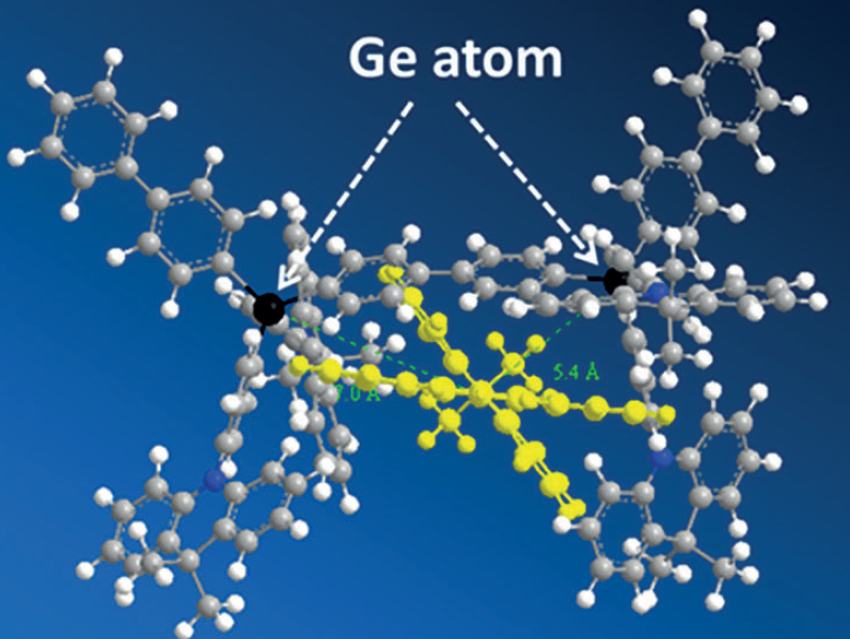Thermally activated delayed fluorescence (TADF)-based polymer light-emitting diodes (PLEDs) are useful for low-cost and large-area applications. However, the currently available blue-emitting TADF in light-emitting diodes usually suffer from a low triplet energy (ET) and charge imbalance, which causes low luminescence efficiency and high efficiency roll-off.
Show-An Chen and colleagues, National Tsing-Hua University, Taiwan, have developed a new σ-π conjugated polymer host with a biphenyl germanium (Ge) backbone (pictured). In this structure, two electron-donating acridan moieties are bound to each Ge atom. This polymer has the highest ET (2.86 eV) among reported π-π and σ-π conjugated polymers. The germanium also provides an external heavy-atom effect to promote the rate of reversed intersystem crossing (RISC) in TADF guest emitters. Thus, more triplet excitons are harvested for light emission.
This polymer host was doped with the sky-blue TADF guest 9,9-dimethyl-9,10-dihydroacridine-2,4,6-triphenyl-1,3,5-triazine (DMAC-TRZ, pictured in yellow). This combination resulted in a high-performance TADF PLED with an external quantum efficiency of up to 24.1 %. The polymer host can be combined with different TADF guests to achieve a highly efficient TADF electroluminescence.
- Acridan Grafted Poly(biphenyl germanium) with High Triplet Energy, Low Polarizability and External Heavy-Atom Effect for Highly Efficient Sky-Blue TADF Electroluminescence,
Miao-Ken Hung, Kuen-Wei Tsai, Sunil Sharma, Jun-Yi Wu, Show-An Chen,
Angew. Chem. Int. Ed. 2019.
https://doi.org/10.1002/anie.201904433




